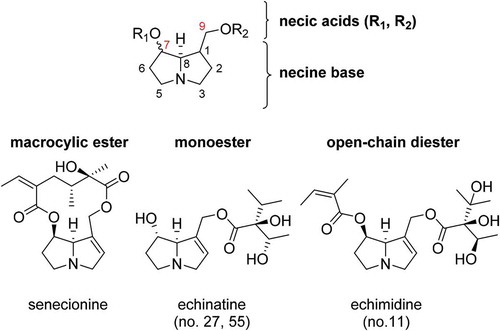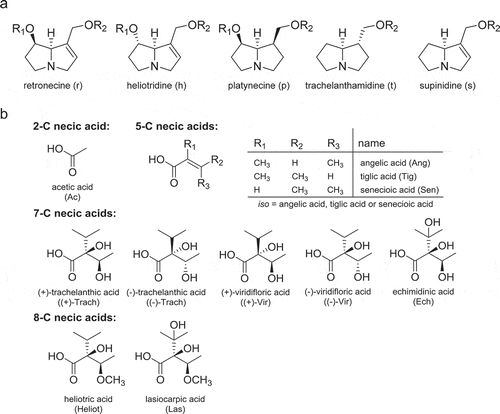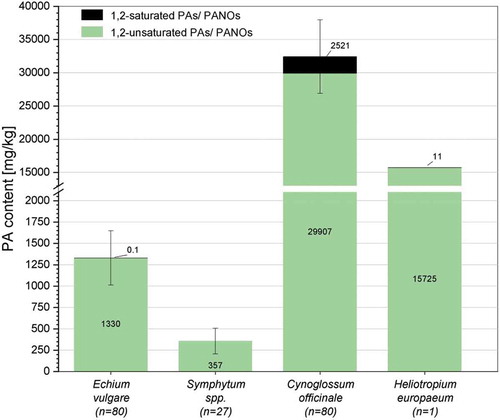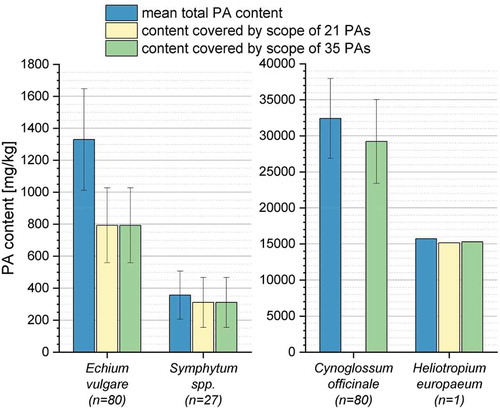Figures & data
Figure 1. Common chemical structure of PA (comprising necine base and necic acid) and PA structures of different ester types.

Figure 2. a) Structures of common necine bases of the plant family Boraginaceae. b) Structures of typical necic acids occurring in PAs of the plant family Boraginaceae.

Table 1. PAs and PANOs of the scope of 21 PAs proposed for legislation on PAs in food and their corresponding naturally occurring isomers (given in the same row) discussed for an expansion of the scope to 35 PAs.
Table 2. Characteristic mass spectrometric fragment ions [m/z] and respective relative intensity ratios [%] used for screening and confirmation of PAs and PANOs of different necine base and ester types ( and ). Base peak ions are shown in red.
Figure 3. Mean total PA contents of 1,2-unsaturated (green) and 1,2-saturated PAs (black) of the four Boraginaceae species. Error bars denote the scattering of the mean total PA contents in the sample size.

Table 3. Number of detected PAs and PANOs from each necine base type and their relative proportions (rel. prop.) of the mean total PA content in the four Boraginaceae species.
Table 4. The 10 most abundant alkaloids (sum of PAs and PANOs) of the plant species Echium vulgare. The bold alkaloids are included in the analytical scope of 21 PAs proposed for the determination of maximum levels while alkaloids given in italics are representatives of the 14 structural isomers discussed for the expansion of the scope to 35 PAs.
Table 5. The most abundant alkaloids (sum of PAs and PANOs) and PA profile, respectively, of the plant material Symphytum spp. The bold alkaloids are included in the analytical scope of 21 PAs proposed for the determination of maximum levels while alkaloids given in italics are representatives of the 14 structural isomers discussed for the expansion of the scope to 35 PAs.
Table 6. The 10 most abundant alkaloids (sum of PAs and PANOs) of the plant species Cynoglossum officinale. The bold alkaloids are included in the analytical scope of 21 PAs proposed for the determination of maximum levels while alkaloids given in italics are representatives of the 14 structural isomers discussed for the expansion of the scope to 35 PAs.
Table 7. The 10 most abundant alkaloids (sum of PAs and PANOs) of the plant species Heliotropium europaeum. The bold alkaloids are included in the analytical scope of 21 PAs proposed for the determination of maximum levels while alkaloids given in italics are representatives of the 14 structural isomers discussed for the expansion of the scope to 35 PAs.

